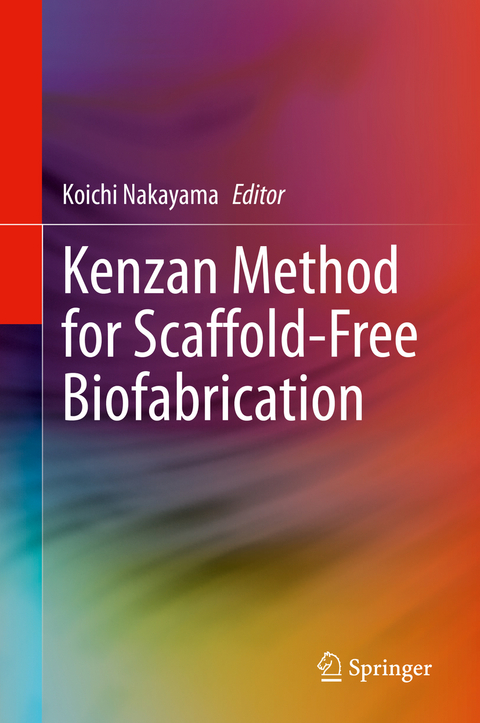
Kenzan Method for Scaffold-Free Biofabrication
Springer International Publishing (Verlag)
978-3-030-58687-4 (ISBN)
- First book on the novel Kenzan method of tissue engineering;
- Explains basic concepts and applications for organ regeneration modeling;
- Introduces a unique robotic system for scaffold-free cell construction.
lt;b>_Koichi Nakayama, MD, PhD, is Professor and Chairman at the Department of Regenerative Medicine and Biomedical Engineering, Faculty of Medicine, Saga University, Japan. He is also a Visiting Professor at the Medical Institute of Bioregulation, Kyushu University, Fukuoka, Japan. Dr. Nakayama is currently the president of the Cell Aggregation Meeting and also serves as a committee member for the Japanese Society for Regenerative Medicine. He received his MD from Kyushu University, Faculty of Medicine and his PhD from the Graduate School of the same institution. After specializing and working in orthopedic surgery at Fukuoka Red Cross hospital, National Hospital Organization Kyushu Medical Center, and the Department of Orthopedic Surgery of the Kyushu University Hospital, Nakayama went on to lead a project on bio-rapid prototyping funded by the Japan Science and Technology Agency (JST) at Kyushu University. This work led to the invention of a pioneering scaffold-free method for bio 3D printing, based on cell spheroids being deposited onto needle arrays at specific coordinates. In 2010 Nakayama co-founded Cyfuse Biomedical, where he currently is the scientific advisor. Together with Shibuya Kogyo, Cyfuse work on developing the bio 3D printer Regenova, as well as new biological products and solutions for drug testing and regenerative medicine. The company, together with Nakayama's laboratory at Saga University and several Japanese and international partners are leading the way in scaffold-free bio 3D printed blood vessels, cartilage, liver, cardiac and neural tissues.
Introduction: The History of the Kenzan Method.- Basic Review of the Kenzan Method.- Introduction of the Bio 3d Printer: The Robotic System.- Blood Vessels Project.- Liver.-
Articular Cartilage.- Trachea.- Peripheral Nerve.- Cardio Myocyte.- Diaphragm.- Bio 3d
Printed "Mini-Organ" for Drug Testing Tools
| Erscheinungsdatum | 26.01.2021 |
|---|---|
| Zusatzinfo | VIII, 184 p. 63 illus., 44 illus. in color. |
| Verlagsort | Cham |
| Sprache | englisch |
| Maße | 155 x 235 mm |
| Gewicht | 445 g |
| Themenwelt | Medizin / Pharmazie ► Physiotherapie / Ergotherapie ► Orthopädie |
| Naturwissenschaften ► Biologie ► Zellbiologie | |
| Technik ► Maschinenbau | |
| Schlagworte | 3D cell printing • Biofabrication • biomaterials • In vitro organ biofabrication • In vitro organ modeling • In vitro tissue biofabrication • In vitro tissue modeling • Kenzan • Organoids • Organ-on-chips • Regenerative medicine • Scaffold free • spheroid • Tissue engineering |
| ISBN-10 | 3-030-58687-1 / 3030586871 |
| ISBN-13 | 978-3-030-58687-4 / 9783030586874 |
| Zustand | Neuware |
| Haben Sie eine Frage zum Produkt? |
aus dem Bereich


